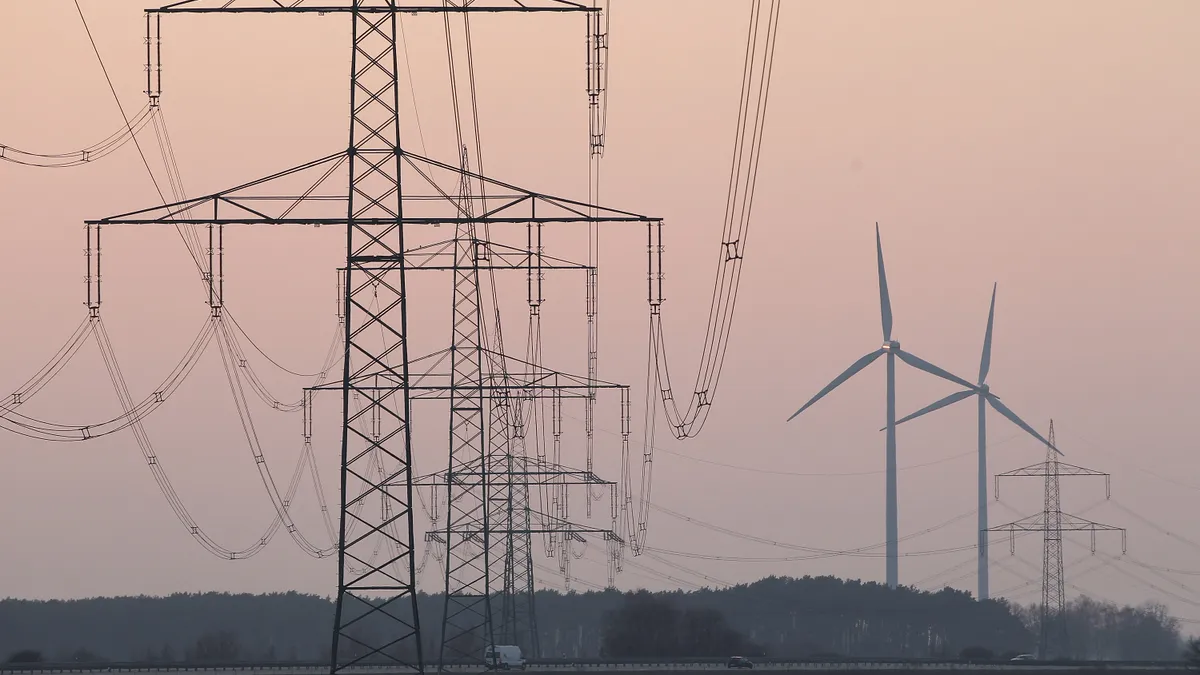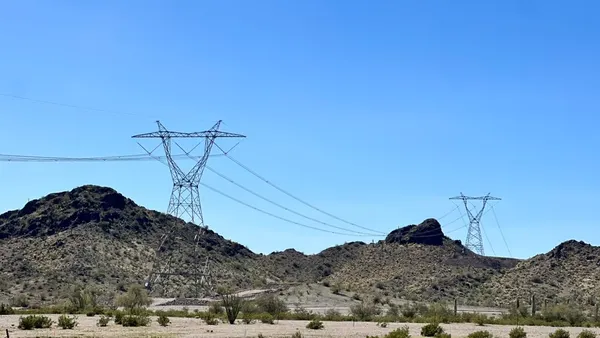Dive Brief:
-
With an eye towards supporting the shift towards renewable energy, the Federal Energy Regulatory Commission is reviewing scores of comments offering recommendations on how the agency should change its rules for planning transmission lines, paying for them and connecting generators to them.
-
Generally, the Department of Energy (DOE), state regulators, utilities and others supported proactive transmission planning to help connect wind and solar farms to population centers, according to comments filed before a Wednesday deadline.
-
“The commission should require that transmission providers take a more forward-looking approach that considers a broader array of transmission needs, including those resulting from direct corporate purchases along with corporate and state renewable energy goals, so that ratepayers do not foot the bill for transmission projects to serve aging, fossil-fuel generation,” Amazon Energy told FERC.
Dive Insight:
In a sweeping rulemaking process started in July, FERC is considering requiring transmission providers to identify geographic zones that have the potential for large amounts of renewable generation and plan transmission for those areas (RM21-17).
When FERC launched its advanced notice of proposed rulemaking, FERC Chairman Richard Glick said the agency was responding to a shift away from fossil-fueled power plants towards renewable energy.
“We are not planning for the future generation mix and we really need to be if we're going to build the right kind of grid going forward,” Rob Gramlich, president of Grid Strategies, said Thursday.
With the Biden Administration trying to set the U.S. on a path to having carbon-free electricity by 2035, “effective and efficient” transmission planning is needed to reach that goal, the Department of Energy told FERC.
DOE recommended FERC require 30-year transmission plans that take into account renewable energy policies and customer demand for renewable energy.
To get to a carbon-free economy by 2050, high-voltage transmission capacity needs to grow by about 60% by 2030 and triple by mid-century to connect wind and solar facilities to demand, according to a Princeton University study that pegs the cost of the expansion at $360 billion through 2030 and $2.4 trillion by 2050.
In the face of those potential costs, the Electricity Consumers Resource Council, which represents large energy users, called for developing a “roadmap” that addresses regional transmission challenges and national needs.
“Without a national holistic understanding of the grid today paired with future needs, inefficient and expensive transmission development will continue unabated,” the group said in comments.
The PJM Interconnection, the largest U.S. grid operator, suggested FERC require RTO regions and non-RTO regions to prepare long-term transmission plans based on customer-identified needs and probabilistic analysis.
State utility regulators also urged FERC to require long-term transmission planning, which they said could be more efficient and less expensive than making project-by-project transmission upgrades.
“Enhanced interregional transmission planning may be essential to meet demand for a large-scale clean energy transition, while ensuring rates remain just and reasonable,” the National Association of Regulatory Utility Commissioners said in comments.
The Edison Electric Institute (EEI), a trade group for investor-owned utilities, supported “holistic” transmission planning.
“Commission policy should encourage long term planning to build transmission that (1) allows access to resource rich areas, (2) maintains reliability with load and resource variability and (3) optimizes diversity, consistent with the resource needs of customers,” EEI said.
Consumer advocates urged FERC to make sure communities and stakeholders can take part in transmission planning and other grid operator processes.
“Environmental justice communities and low income households have been systematically deprived of meaningful access to the [independent system operator/]RTO stakeholder process,” Public Citizen said.
Based on an initial review of the comments at FERC, there seems to be broad support for proactively planning for the future grid, according to Grid Strategies’ Gramlich.
FERC could issue a final transmission rule, or rules, in about a year, Gramlich said, noting it would likely take several more years for the rules to be put in place and new processes to take effect.















